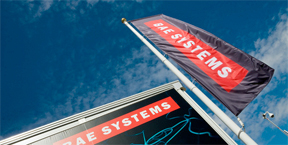The team of engineers includes some of BAE's very own. The effective use of satellite communication systems is essential to help facilitate the safe and routine flying of unmanned aircraft in airspace, which we are helping to pioneer. Unmanned Air Vehicles (UAV) need to be able to transfer large amounts of data quickly and securely during missions.
In a UK-first, experts working at Future Combat Air Systems business, in partnership with engineers from aerospace company Astrium, have found a way to use a “communications corridor” within the Ka-band to send large amounts of data into space. To test the “corridor,” the team connected the latest UAV Mission System and associated Unmanned Air System Control Station to the EADS Astrium Air Patrol Ka-band Satellite Communications System, which was, in turn, bolted down to a moving platform supplied by Astrium termed the ‘Rocking Bed’ to allow mission system software to communicate over the satellite link.
Although the ‘Rocking Bed’ never actually left the ground it was able to replicate the profile of an unmanned aircraft allowing the systems to be tested as if they were on-board a UAV flying a real mission. The data was able to complete four ‘hops’ from the testing facility in Poynton, Cheshire, to the satellite and from the satellite to Goonhilly Downs station in Cornwall and back again—a distance of 144,000km—more than a third of the distance from the Earth to the moon. By hitching a ride on the new satellite super-highway, data can bypass the already-congested satellite pathways which are crowded with data generated by non-military sources including numerous TV stations.
John Airey, of BAE's Future Combat Air Systems business, said, “Tapping into this communications frequency is the equivalent of a home internet user switching from an old copper wire modem connection to fibre optic broadband. Transfering data in this way offers distinct advantages especially for UAVs which need to quickly and securely transfer large amounts of data during mission phases. This latest trial proved our software and hardware can operate over such an advanced satellite communications link without presenting any major integration problems. As UAV technology becomes more complex and the demand for these kind of connections greater; it will be those businesses at the forefront of this technology which will prosper.”
The trial took place at Astrium’s advanced manufacturing facility in Poynton, Cheshire, and was the culmination of two years’ work from ourselves, Astrium and satellite provider Avanti Communications.
Nigel Pearce, Head of Terminals and Products at Astrium which developed a state of the art high through-put antenna to support the simulation; a Ka development of the AirPatrol satellite communications system that is flying today, added, “This joint team effort has successfully proved the potential for airborne satellite communications in supporting complex UAV missions at Ka-band.”


